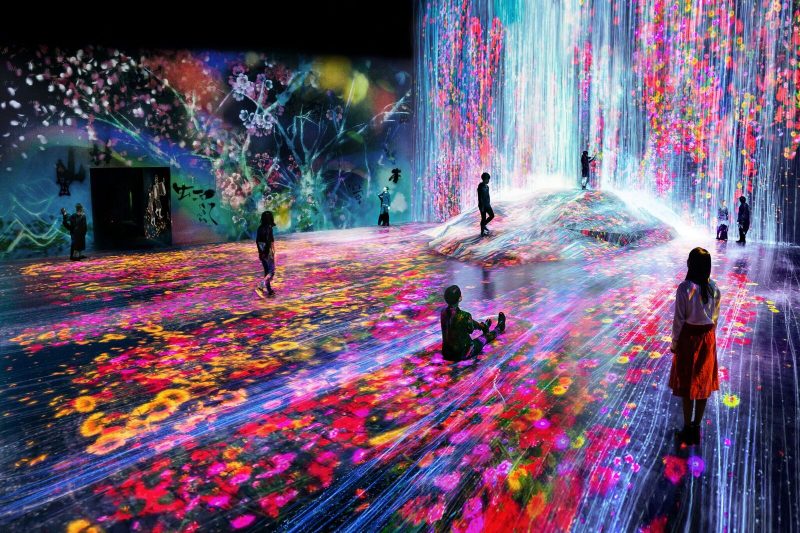hmeng-project 1
When I draw myself I found it very interesting to represent my own features such as hairstyle and glasses using abstract geometries and shapes. And drawing using coding is a brand new workflow that requires a different logic from drawing with hands.
//Sean(Han) Meng
//Section C
//hmeng@andrew.cmu.edu
//Project-01-self portrait
function setup() {
createCanvas(600, 600);
background(250);
}
function draw() {
//BackGround
stroke(229, 172, 211);
strokeWeight(1);
point(0, 300);
point(250, 250);
point(600, 450);
noFill();
strokeWeight(30);
beginShape();
vertex(0, 300);
quadraticVertex(250, 250, 600, 450);
endShape();
stroke(89, 0, 89);
strokeWeight(1);
point(0, 500);
point(300, 400);
point(620, 100);
noFill();
strokeWeight(18);
beginShape();
vertex(0, 500);
quadraticVertex(300, 400, 620, 100);
endShape();
stroke(255, 235, 50);
strokeWeight(1);
point(0, 360);
point(300, 400);
point(620, 600);
noFill();
strokeWeight(20);
beginShape();
vertex(0, 360);
quadraticVertex(300, 400, 620, 600);
endShape();
//Body
stroke(0, 0, 103);
fill(0, 0, 73);
strokeWeight(3);
strokeJoin(ROUND);
beginShape();
vertex(165, 365);
vertex(140, 400);
vertex(130, 600);
vertex(450, 600);
vertex(423, 400);
vertex(380, 365);
endShape();
//Hoodie
stroke(150);
fill(150);
strokeWeight(3);
strokeJoin(ROUND);
beginShape();
vertex(205, 295);
vertex(175, 330);
vertex(260, 370);
vertex(270, 370);
vertex(290, 370);
vertex(385, 330);
vertex(350, 295);
endShape();
//Neck
stroke(230,214,169);
fill(230,214,169);
strokeWeight(3);
strokeJoin(ROUND);
beginShape();
vertex(250, 330);
vertex(245, 370);
vertex(310, 370);
vertex(305, 330);
endShape();
//Hoodie out
stroke(210);
fill(210);
strokeWeight(3);
strokeJoin(ROUND);
beginShape();
vertex(270, 360);
vertex(175, 330);
vertex(165, 365);
vertex(272, 370)
endShape();
stroke(210);
fill(210);
strokeWeight(3);
strokeJoin(ROUND);
beginShape();
vertex(385, 330);
vertex(300, 355);
vertex(295, 370);
vertex(390, 370);
vertex(385, 330);
endShape();
//Left Ear
stroke(240,224,179);
fill(240,224,179);
strokeWeight(1);
strokeJoin(ROUND);
beginShape();
vertex(200, 240);
vertex(187, 240);
vertex(180, 260);
vertex(200, 290);
vertex(215, 300);
vertex(215, 260);
endShape();
//Right Ear
stroke(240,224,179);
fill(240,224,179);
strokeWeight(1);
strokeJoin(ROUND);
beginShape();
vertex(360, 240);
vertex(364, 240);
vertex(370, 260);
vertex(350, 290);
vertex(345, 300);
vertex(215, 260);
endShape();
//Face
stroke(255,244,189);
fill(255,244,189);
strokeWeight(3);
strokeJoin(ROUND);
beginShape();
vertex(215, 270);
vertex(215, 310);
vertex(250, 335);
vertex(267, 342);
vertex(290, 345);
vertex(337, 298);
vertex(337, 225);
vertex(215, 225);
endShape();
//Hair
stroke(0);
fill(0);
strokeWeight(4);
strokeJoin(ROUND);
beginShape();
vertex(202.5, 262.5);
vertex(187.5, 220);
vertex(200, 150);
vertex(270, 127.5);
vertex(337.5, 150);
vertex(360, 202.5);
vertex(348, 263.25);
vertex(342, 265.25);
vertex(337.5, 225);
vertex(318, 231);
vertex(300, 225);
vertex(275, 235);
vertex(260, 230);
vertex(250, 235);
vertex(217, 230);
vertex(215, 270);
vertex(202.5, 262.5);
endShape();
//Glasses
strokeWeight(3);
fill(255);
arc(245, 265, 42, 37, 0, PI + PI);
strokeWeight(3);
fill(255);
arc(305, 265, 42, 37, 0, PI + PI);
stroke(150);
curve(266, 263, 266, 260, 280, 260, 300, 263);
stroke(0);
line(215, 260, 225, 260);
line(325, 260, 339, 260);
//Nose
strokeWeight(2);
line(275, 270, 270, 300);
line(270, 300, 275, 300);
//Mouth
noStroke();
fill(240,214,159);
triangle(260, 325, 293, 325, 270, 320);
//Arms
stroke(50, 50, 150);
strokeWeight(3);
line(175, 440, 170, 600);
line(390, 440, 410, 600);
//Strings
fill(255);
stroke(255);
strokeWeight(1);
rect(260, 370, 1, 80);
rect(300, 370, 1, 75);
rect(259, 450, 4, 15);
rect(299, 445, 4, 15);
//graphic
fill(230);
strokeWeight(5);
stroke(10, 60, 130);
circle(345, 460, 40);
}

![[OLD FALL 2019] 15-104 • Introduction to Computing for Creative Practice](../../../../wp-content/uploads/2020/08/stop-banner.png)


